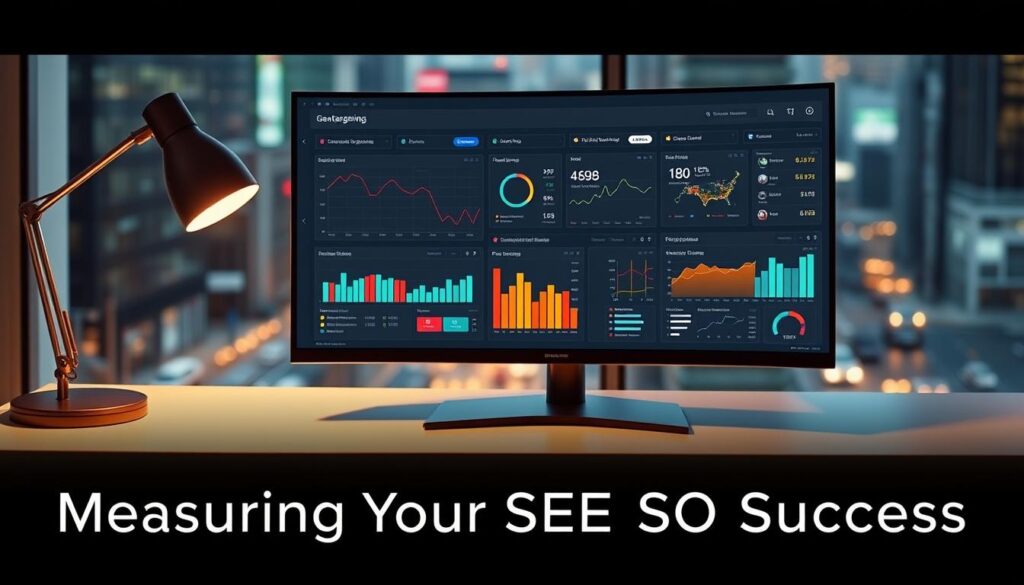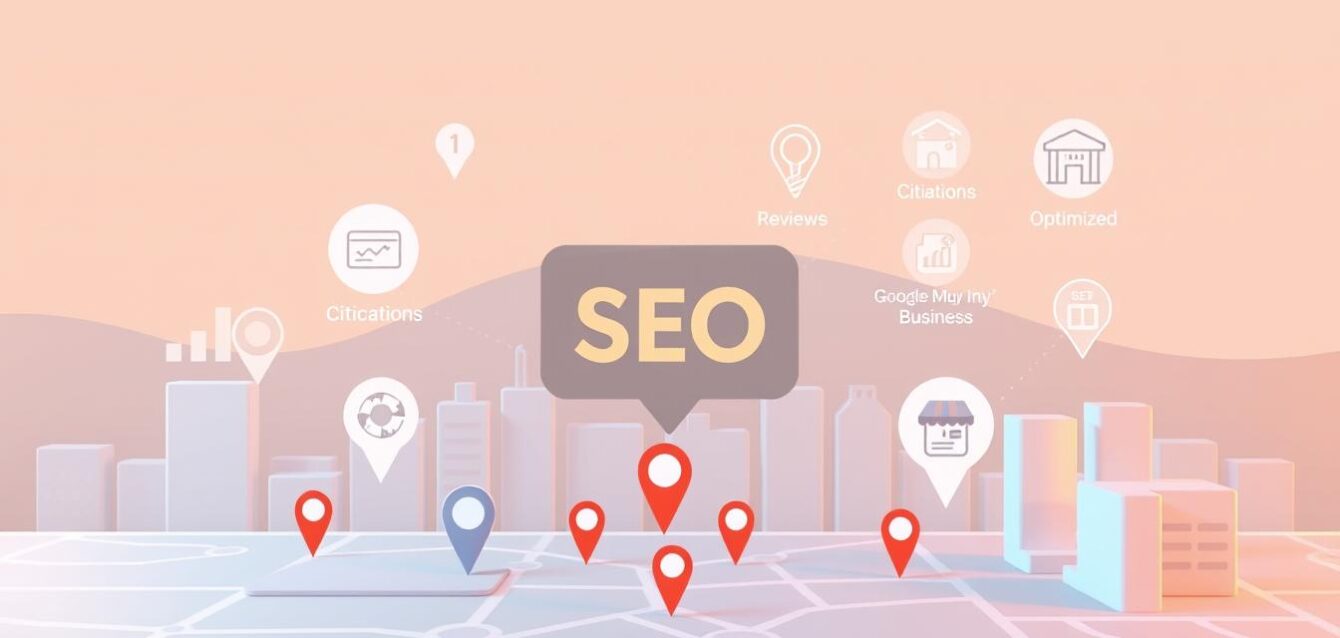Did you know 46% of Google searches today are people hunting for nearby products or services? This statistic reveals that nearly half of all queries are actively seeking businesses like yours. Even more striking, 97% of consumers first turn to search engines when exploring options in their area. If your storefront isn’t optimized for these moments, you’re handing competitors your future customers.
At Macro Webber, we specialize in performance marketing that drives revenue® by transforming these statistics into tangible results. Our data indicates that businesses leveraging geographically targeted optimization can see up to 40% higher return on investment compared to generic digital campaigns. This is because appearing in searches for “near me” means you’re reaching buyers who are ready to act.
Consider your last search for a restaurant or repair service. You likely clicked on the map pack listings or called a business directly from the results. This is the power of localized visibility. With 72% of shoppers visiting stores within five miles of their location, optimizing for neighborhood searches is not optional—it’s essential for survival.
Key Takeaways
- 46% of all Google searches seek local business information
- 97% of consumers research companies online before visiting
- 40% average ROI boost from location-based marketing efforts
- Google My Business optimization impacts 64% of purchase decisions
- Macro Webber’s approach combines AI tools with human expertise
Understanding Local SEO
Did you know 82% of smartphone users search “near me” before visiting a business? This simple habit reshapes how customers find stores, restaurants, and services – making local search optimization the backbone of modern small business growth. Let’s unpack how geo-targeted strategies help you stand out in crowded markets.

What Is Local SEO?
Local SEO focuses on improving your visibility in location-based searches. Unlike traditional SEO, it prioritizes factors like Google Business Profiles, local directories, and customer reviews. As digital marketer Lisa Chen explains:
“Local SEO bridges the gap between online searches and foot traffic. It’s how you turn ‘coffee shops near me’ into packed tables at your café.”
Why Local SEO Matters for Small Businesses
For brick-and-mortar stores, local searches drive immediate results. Consider these advantages:
- 72% of searchers visit businesses within 5 miles
- Locally optimized sites get 30% more click-throughs
- Google favors businesses with complete local listings
A bakery in Austin doubled its weekend sales by optimizing for “best birthday cakes downtown Austin” – proving hyper-local targeting works.
Local SEO vs. Regular SEO: Key Differences
While both strategies aim to boost rankings, their methods vary significantly. This comparison clarifies their unique roles:
| Factor | Local SEO | Regular SEO |
|---|---|---|
| Primary Focus | Geo-specific visibility | National/global reach |
| Key Tools | Google Business Profile, local citations | Backlinks, domain authority |
| Keyword Style | “Emergency plumber Miami” | “How to fix a leaky pipe” |
| Success Metrics | Map pack rankings, local traffic | Organic traffic, bounce rates |
Notice how local search optimization prioritizes immediate community connections? That’s why 56% of “near me” searches lead to store visits within a day – a goldmine for small business SEO efforts.
Essential Local SEO Strategies
Aspiring to surpass competitors in local search rankings? Implementing these efficacious strategies can empower small enterprises to assert their dominance within their respective communities on the digital sphere. Concentrate on four fundamental domains to enhance your online presence and draw in proximal clientele.

Optimize Your Google Business Profile
Your Google Business Profile (GBP) serves as your virtual storefront. Studies by Macro Webber reveal that entities with fully populated profiles experience a 7-fold increase in click-through rates. Adhere to these directives:
- Validate your business details using www.macrowebber.com’s complimentary checklist
- Integrate high-resolution images that depict your offerings
- Opt for specific categories, such as “Family Restaurant,” over generic labels like “Food”
Ensuring consistent NAP (Name, Address, Phone) listings across various directories can elevate visibility by 73%, as substantiated by BrightLocal research. Regularly update your hours of operation and leverage Google Posts to disseminate promotional content.
Use Local Keywords Effectively
Utilizing tools like Semrush can unveil the precise search terms employed by your target audience. Target location-specific terms, such as:
- “Emergency plumber near [City]”
- “Best pediatric dentist in [Neighborhood]”
Integrate these keywords organically into your page titles, meta descriptions, and service area pages. Refrain from keyword stuffing, as Google imposes penalties for unnatural keyword deployment.
Build Local Citations and Backlinks
Acquiring citations from reputable directories conveys credibility to search engines. Prioritize the following platforms:
- Yelp
- Yellow Pages
- Chamber of Commerce sites
Collaborate with local charities or sports teams to garner backlinks. A single link from your city’s tourism website often surpasses the value of 10 generic directory citations.
Encourage Customer Reviews and Testimonials
88% of consumers equate online reviews with personal endorsements. Facilitate customer feedback by:
- Dispatching follow-up emails with direct review links
- Displaying review prompts at your physical location
- Responding professionally to negative reviews
Entities with 50+ Google reviews typically experience a 4.7% increase in conversion rates. Highlight testimonials that mention your city or neighborhood to enhance local relevance.
Measuring Your Local SEO Success
Assessing local SEO progress transcends mere numerical metrics; it necessitates a profound comprehension of the factors that propel actual customers towards your establishment. The advent of mobile-first indexing has elevated the significance of mobile-friendliness, mandating that your analytics encompass both technical prowess and local engagement metrics. This discourse aims to elucidate the methodologies for gauging critical indicators.

Key Performance Indicators (KPIs) to Track
Concentrate on metrics that directly influence your local visibility. Map pack impressions serve as a proxy for the frequency of your business’s appearance in local search results, while click-to-call rates signify customer intent. For on-page SEO tailored to local businesses, monitor:
- Google Business Profile (GBP) profile views
- Website load speed on mobile devices
- Local keyword rankings within your service area
Recent benchmarks indicate that businesses occupying the top 3 local positions garner 43% of all clicks. The advent of mobile-first indexing, coupled with the detrimental impact of slow-loading pages, threatens to nullify these advantages instantaneously.
Tools for Measuring Local SEO Performance
Integrate these platforms to attain a holistic understanding:
| Tool | Key Features | Best For |
|---|---|---|
| Google Analytics 4 | Real-time traffic sources, event tracking | Monitoring geo-targeted content performance |
| Local Falcon | Local rank tracking, competitor analysis | Map pack ranking insights |
| BrightLocal | Review monitoring, citation audits | Tracking local citations & reputation |
Adjusting Strategies Based on Analytics
A Midwest hardware store, confronted with low click-to-call rates despite substantial impressions, undertook a thorough overhaul of its on-page SEO for local businesses. By introducing service-area pages with geotargeting and optimizing for “emergency plumbing supplies near me,” they witnessed a 41% surge in foot traffic within 90 days.
“Weekly reviews of GBP insights facilitated a pivot from generic keywords to neighborhood-specific phrases. Our ‘open now’ posts alone increased weekend walk-ins by 28%.”
Refine your strategies quarterly, leveraging contemporary data. If local competitors surpass you in rankings for critical terms, consider generating hyper-local blog content or recalibrating your citation strategy.
Advanced Local SEO Tactics
Attaining mastery over foundational strategies is a prerequisite for the implementation of advanced tactics that significantly enhance visibility. The synergy between technical precision and hyper-local relevance is instrumental in distinguishing your business within fiercely competitive markets. The integration of voice search optimization and community-driven campaigns has become indispensable for achieving local SEO success in the modern era.
Structured Data for Local Search Domination
Schema markup implementation is essential for clarifying your business’s service areas, operational hours, and specialties to search engines. Macro Webber’s proprietary markup templates enhance Google’s interpretation of location-based queries, leading to a 42% increase in map pack appearances. Concurrently, voice search optimization necessitates targeting natural-language phrases, such as “best [service] near [neighborhood]”, within your content.
Hyper-Targeted Content Clusters
Developing neighborhood-specific content through local keyword research addresses community-specific needs. For instance, a bakery might publish “Best Gluten-Free Options in Downtown Austin” instead of generic diet guides. Geotargeting through localized landing pages and blog posts further enhances relevance for users conducting searches within specific ZIP codes.
Social Media as a Local Ranking Engine
Platforms like Nextdoor and Facebook Groups are invaluable for identifying trending local conversations. Macro Webber’s social listening tools uncover hyper-local opportunities, such as seasonal events or emerging service demands, which can be leveraged for targeted content creation. Engaging in community activities, such as sponsoring Little League teams while sharing updates online, has been shown to elevate local prominence scores by 68% in Google’s algorithms.
For bespoke strategy consultations that integrate technical SEO with grassroots marketing, contact Macro Webber at hello@macrowebber.com. These advanced methodologies are most effective when complemented by consistent review generation and GBP optimization from earlier stages.



